Izmir is a good place to visit in the spring when the weather is usually beautiful. Warm with plenty of sunshine.
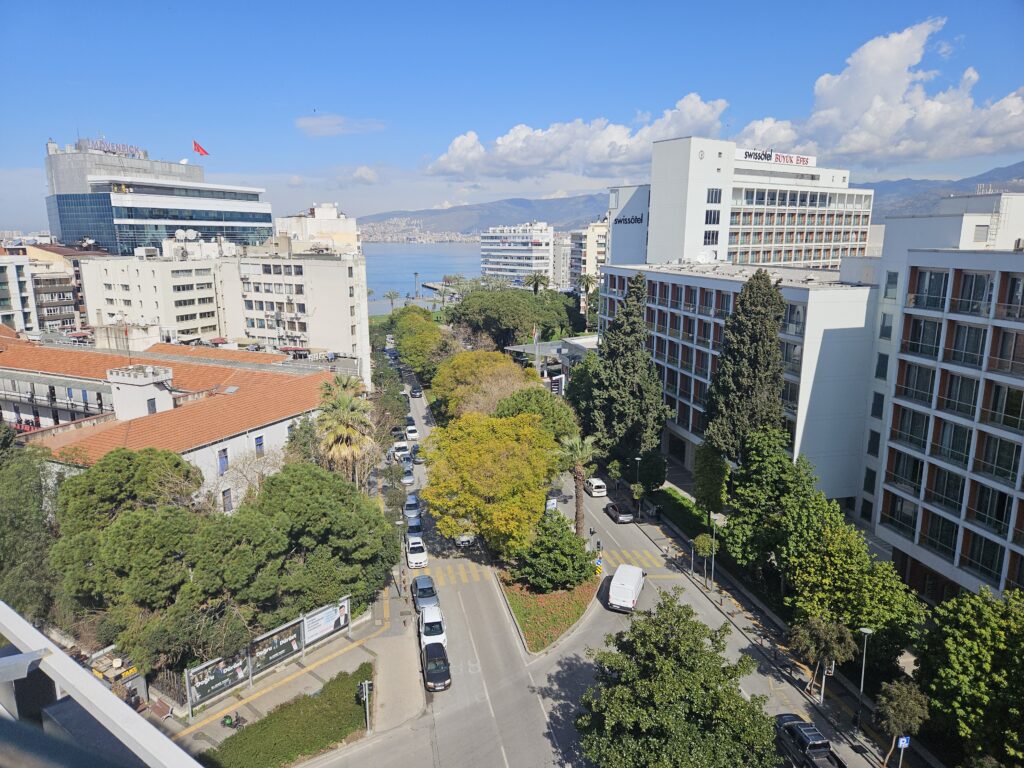
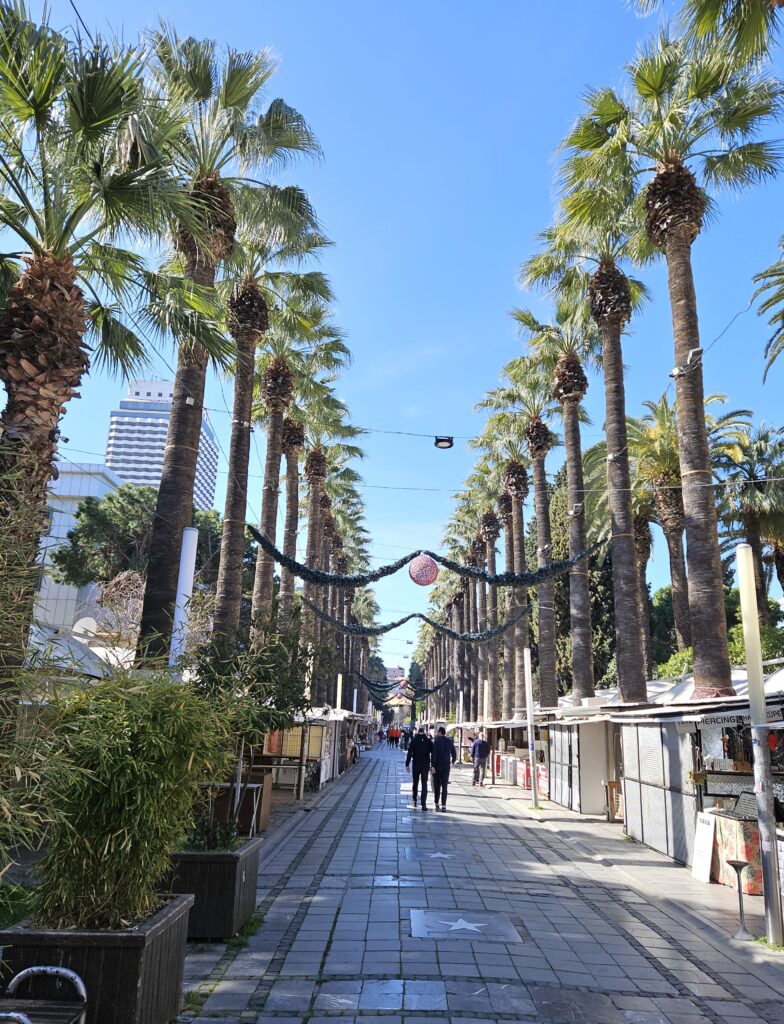

This visit was in mid March. Early spring in Izmir, high temperatures in the upper 60s. But green already and they are planting the summer flowers.

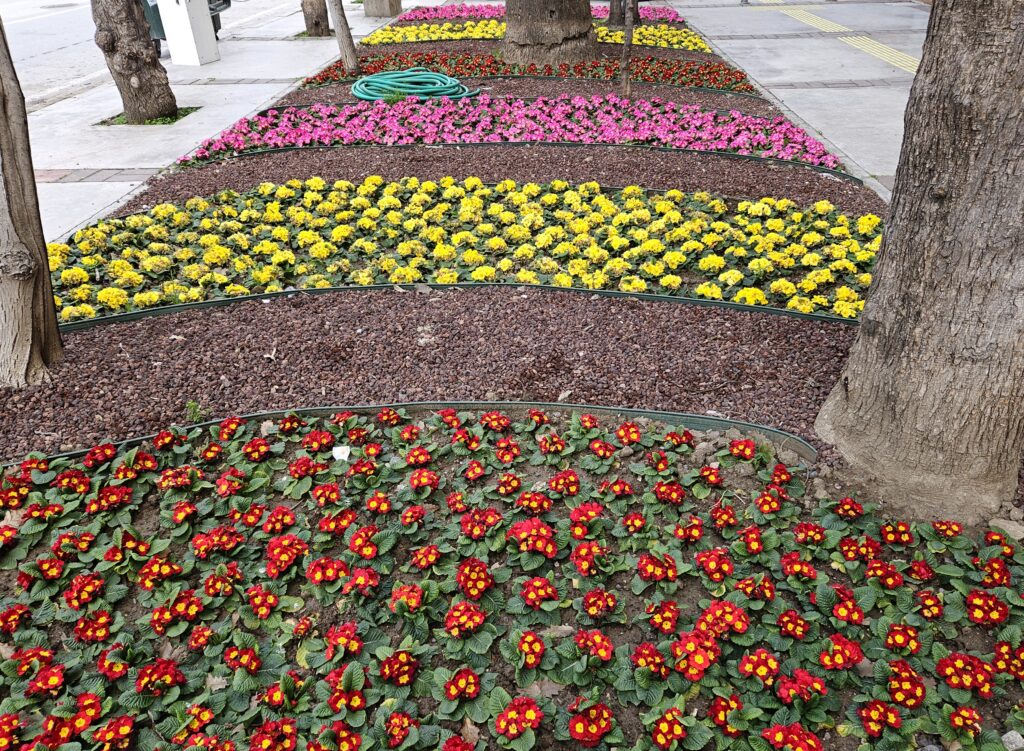
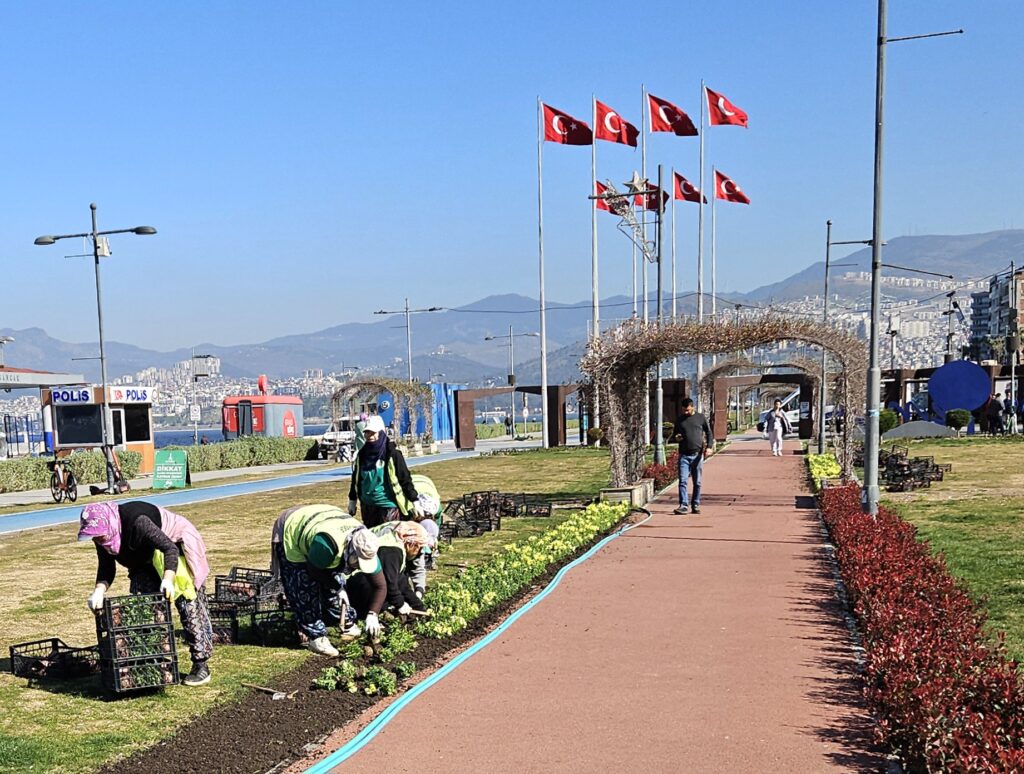
Izmir is the third largest city in Turkey, located on a large bay on the most western tip of the country. Istanbul has many things that make it interesting and worth a visit, but it is so huge and densely packed that it hits you like a tidal wave. Izmir seems like a small town by comparison..
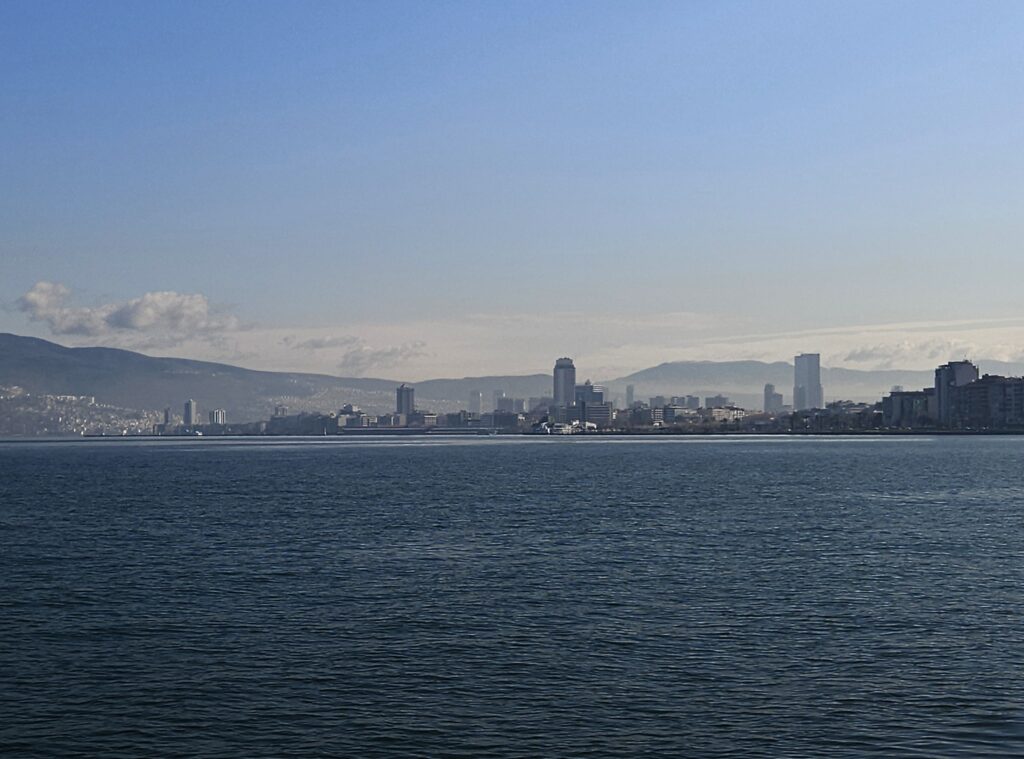
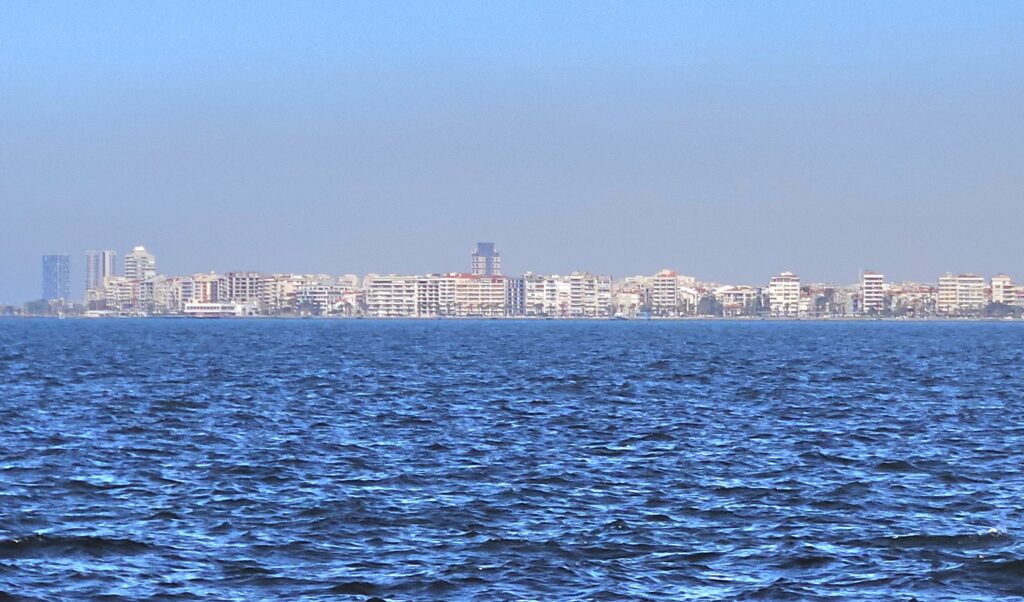
I am told that Izmir it the most secular city in Turkey, and although it is plenty Turkish it is also fairly European.

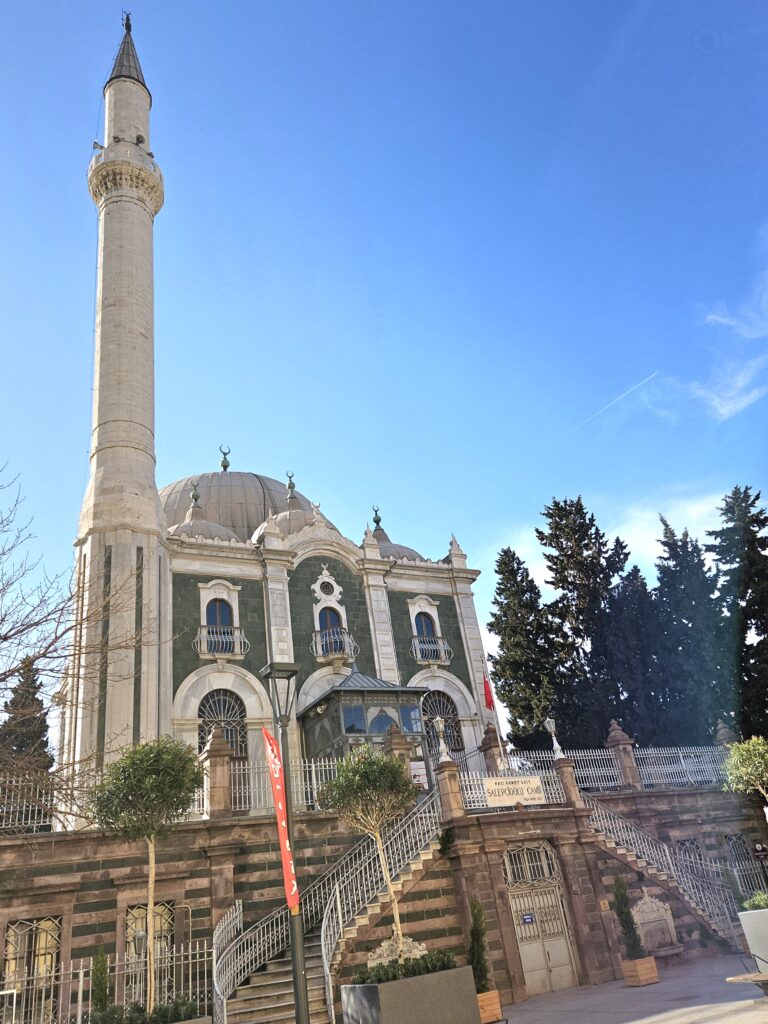
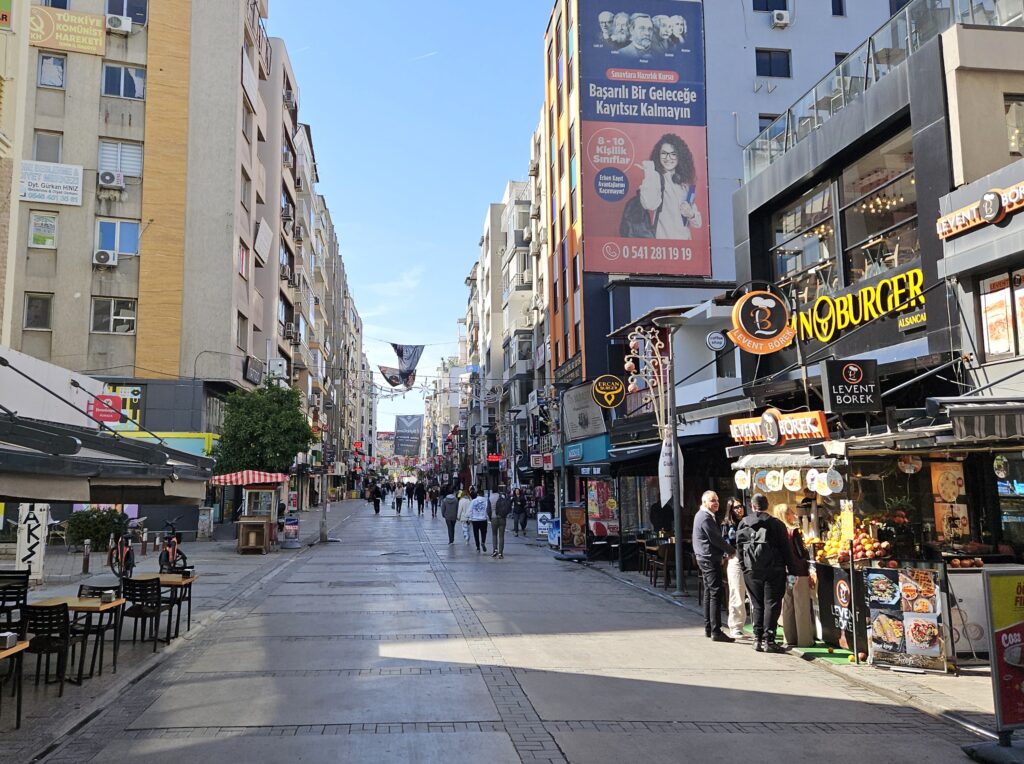
This is an ancient city. Neolithic, Iron age, Hellenic Greek .. , ancient before the Romans came here and established their Asia Minor Capital in nearby Ephesus. And an important city of the Ottoman Empire. There are archeological sites from all these ages in and around Izmir.
A funny photo. This was my breakfast table one morning when I started out with a guide to look at Roman ruins.
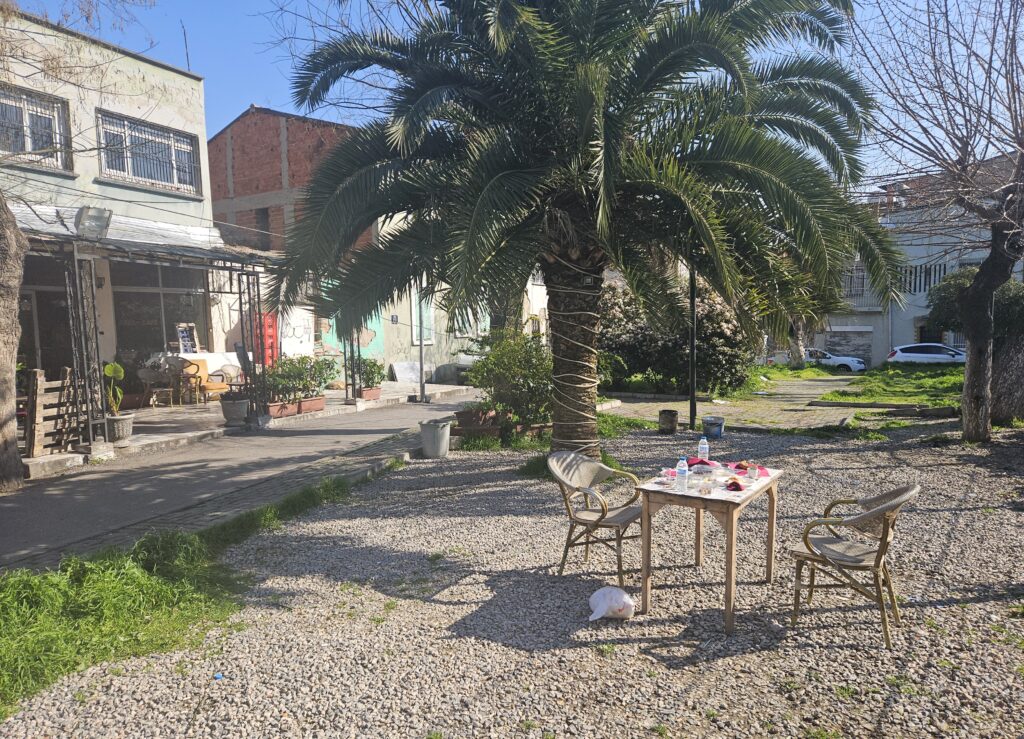
Besides comfort and curiousness, I travel around warm places in the winter because I like to walk. And Izmir is perfect for a walker. You can walk as long as you wish along the sea wall, in the clean air off the ocean. Or away from traffic in the very large “kulture park”, located right in the downtown, or just stroll around the city.
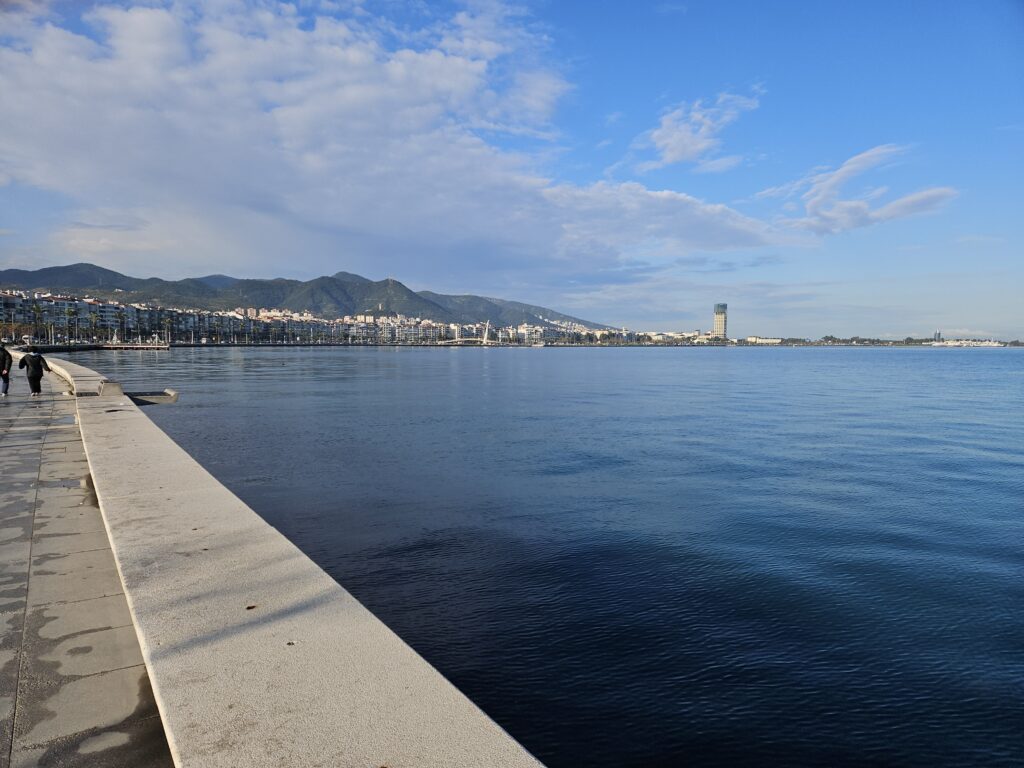
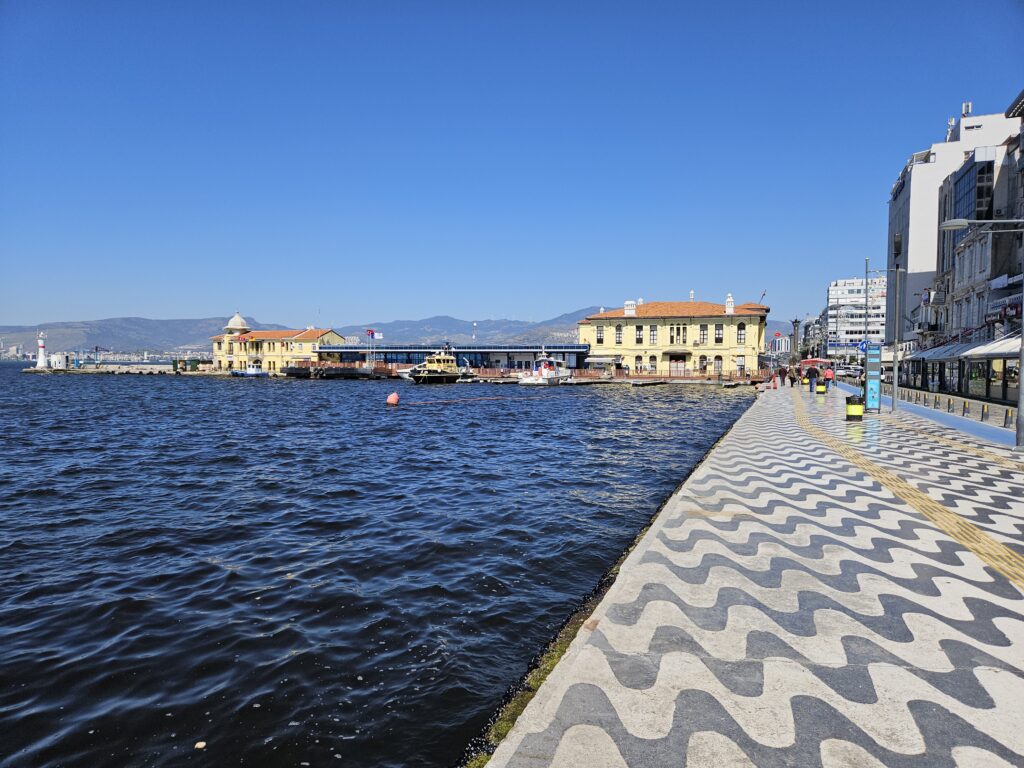
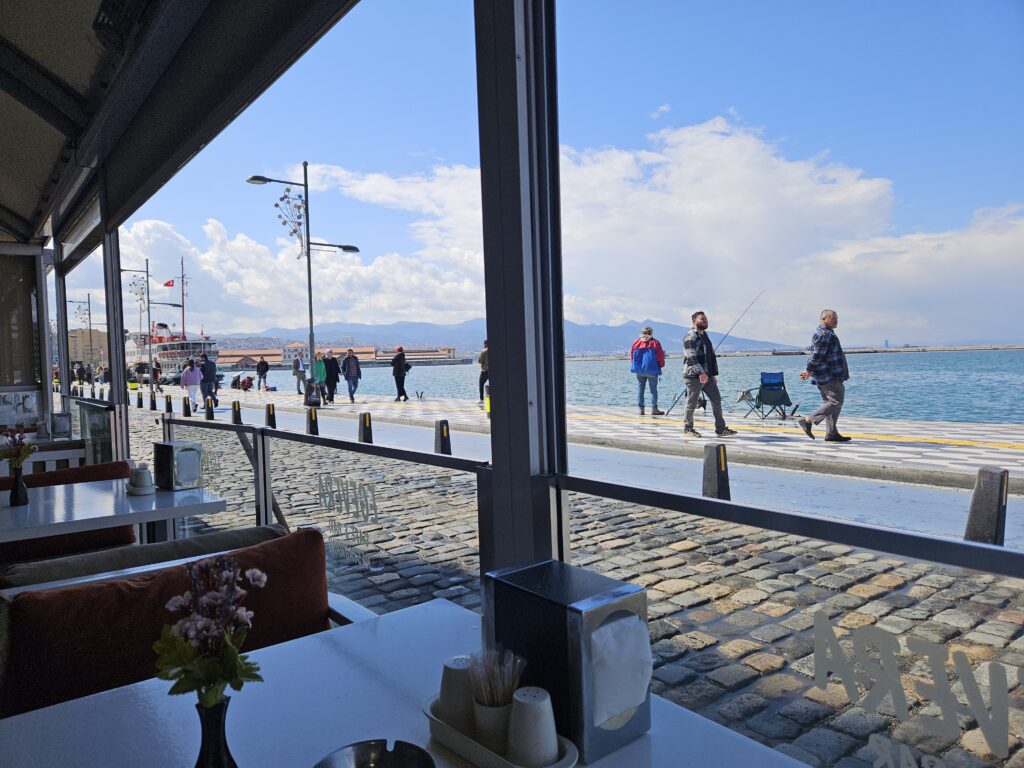
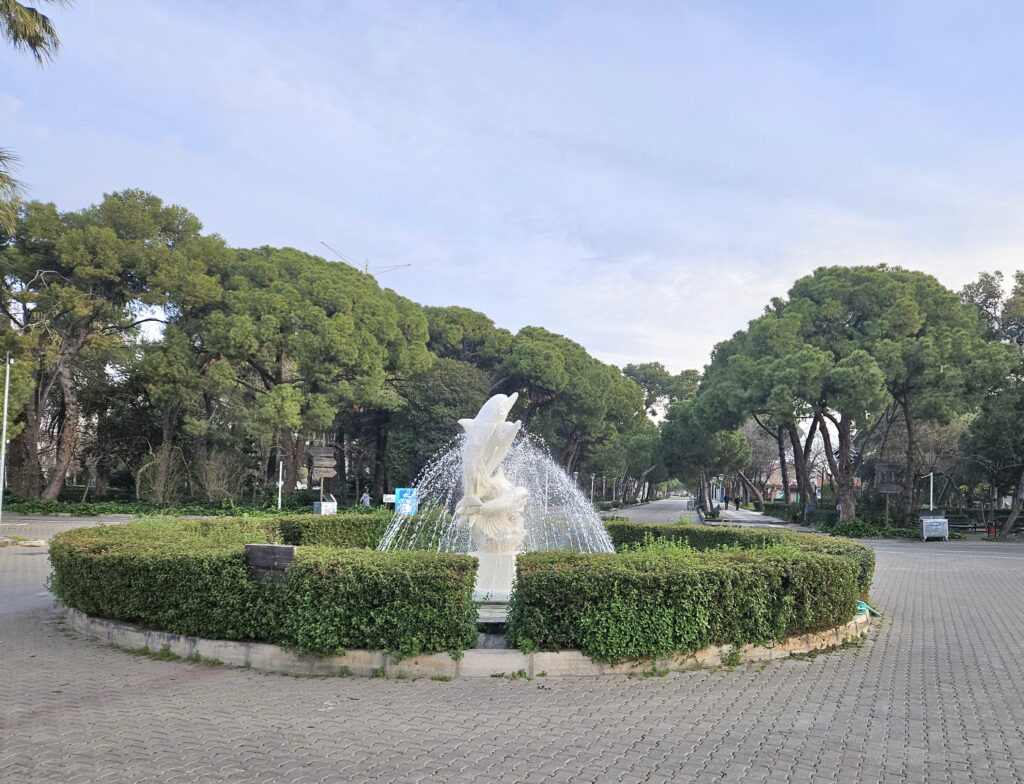
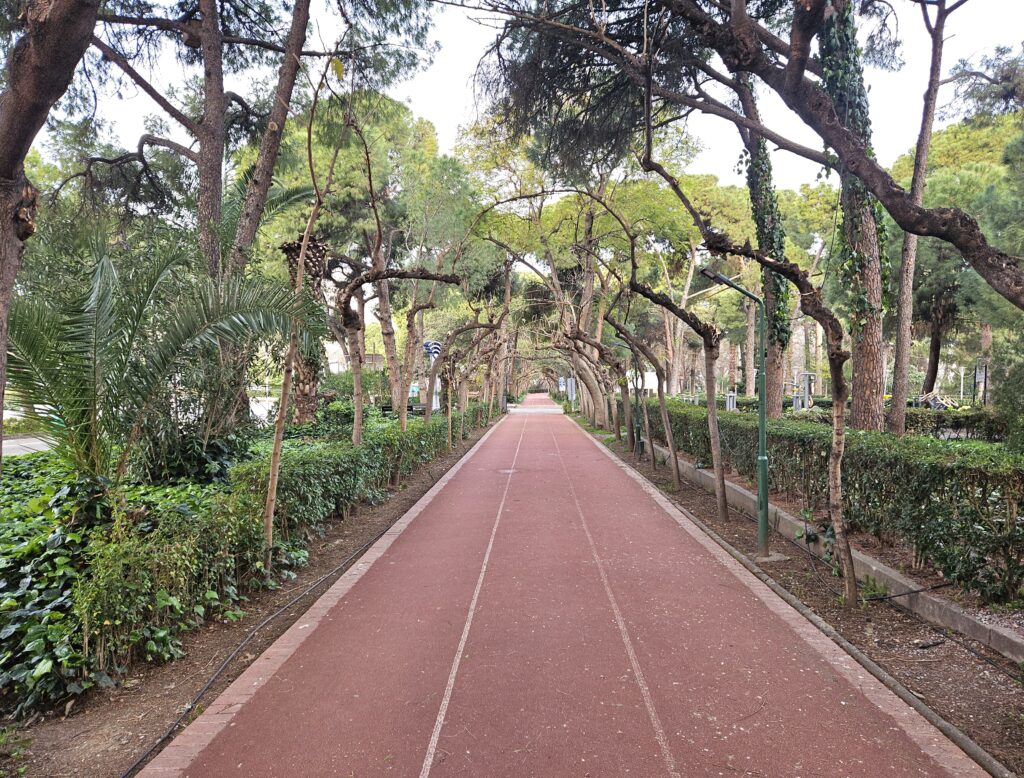
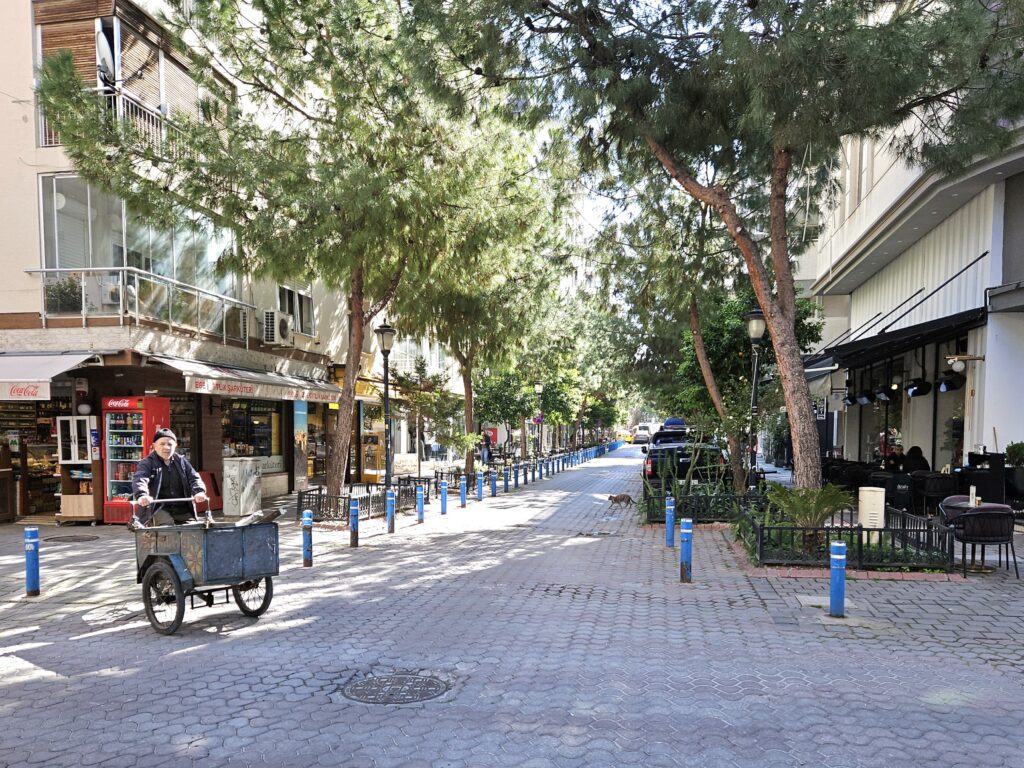
And, they have fish. Lots of fish.

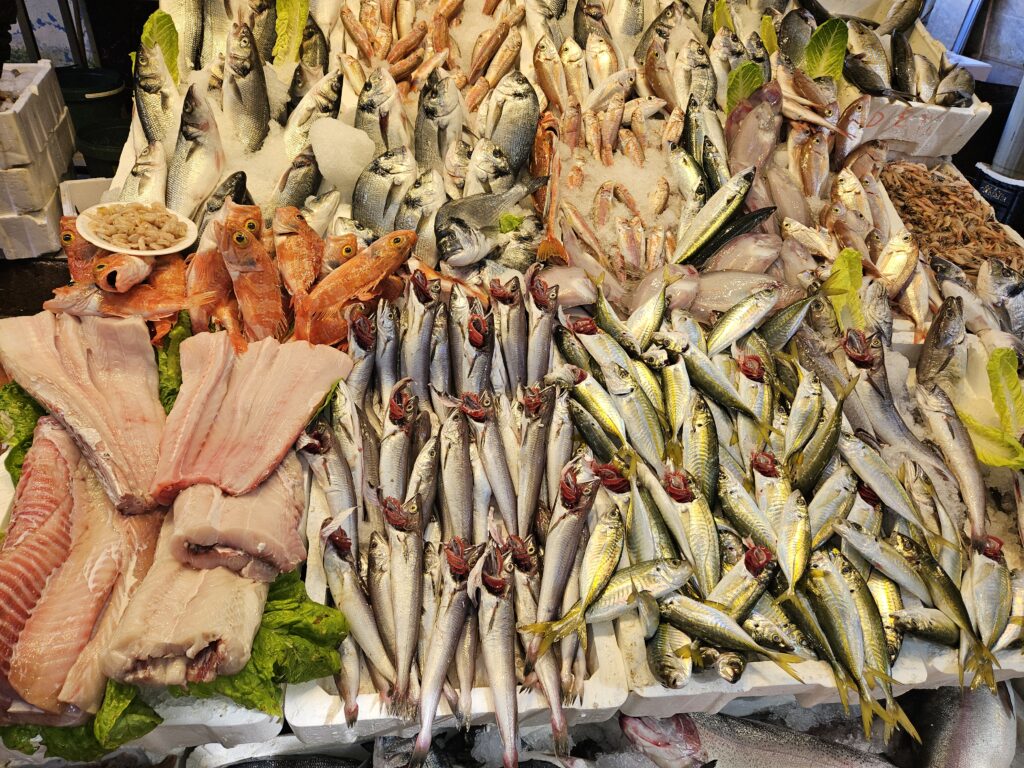
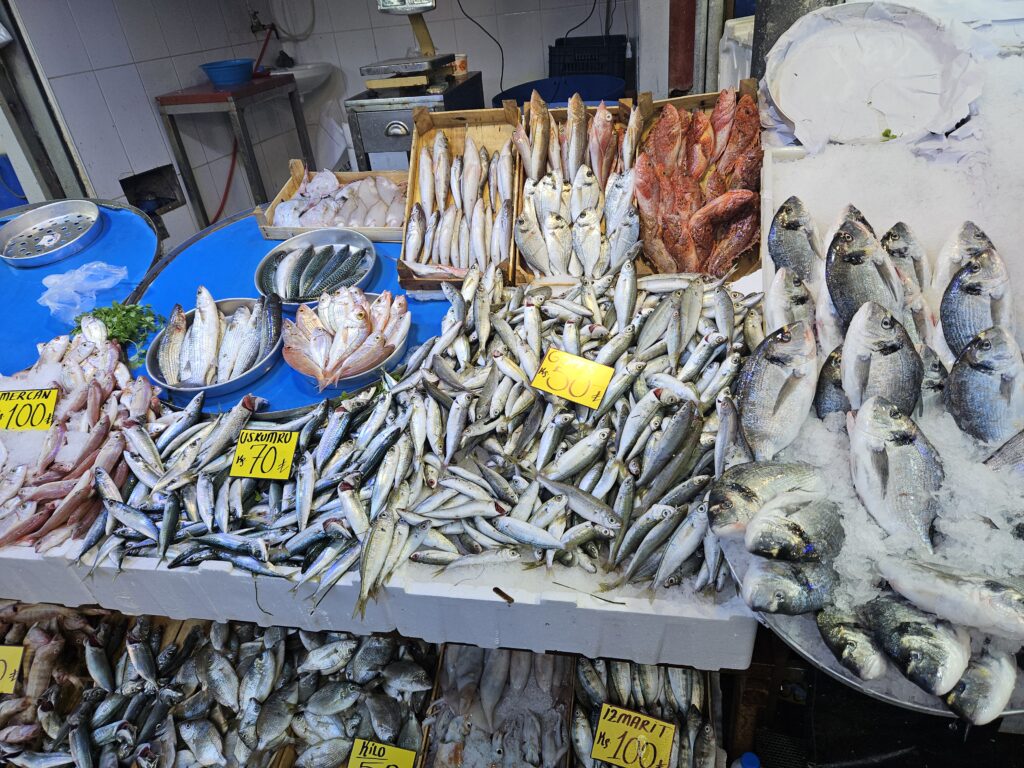
And so, it is very very easy to find my forever favorite lunch:
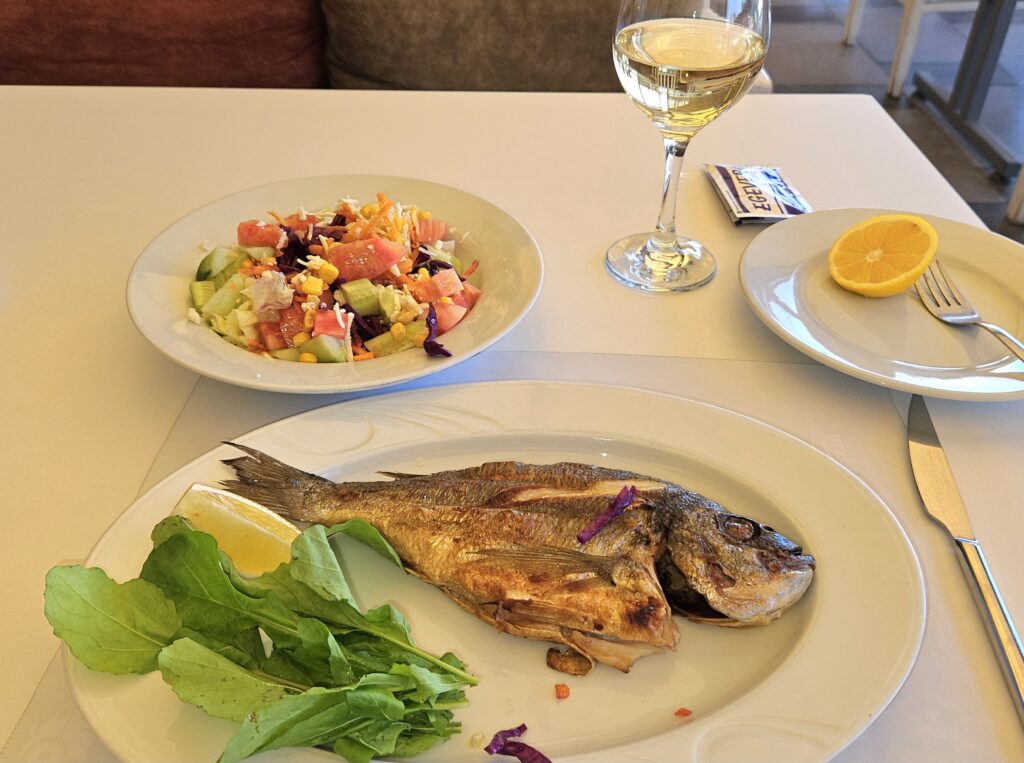
There are surely a million photographs available for the taking in the old Ottoman market.

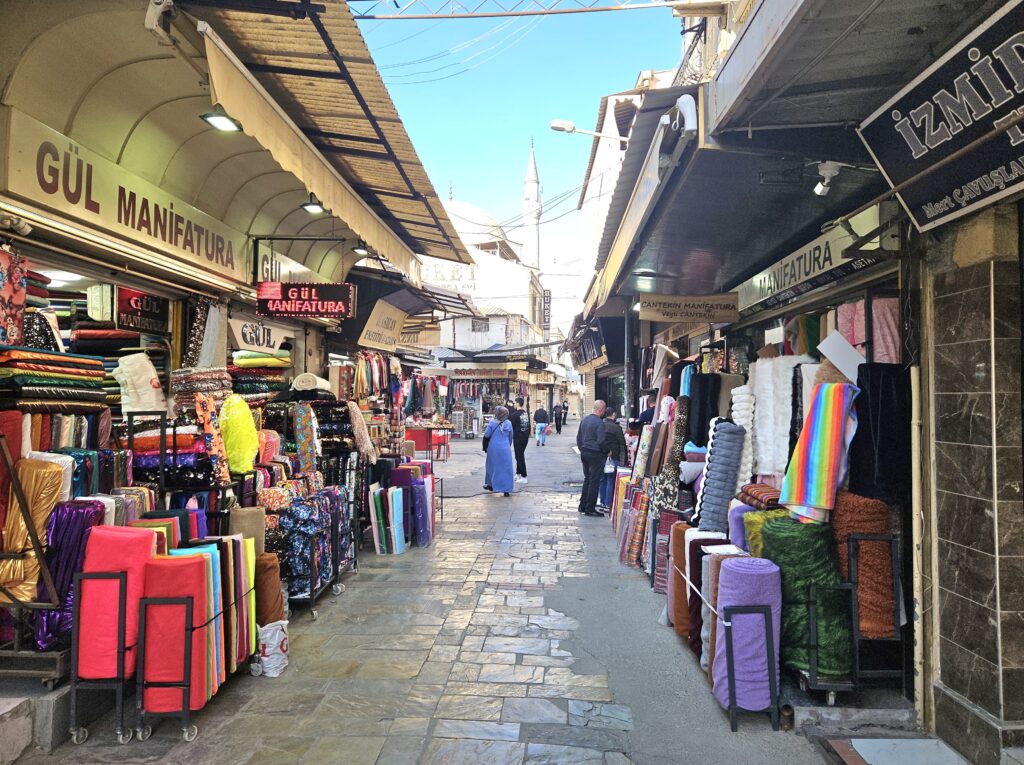
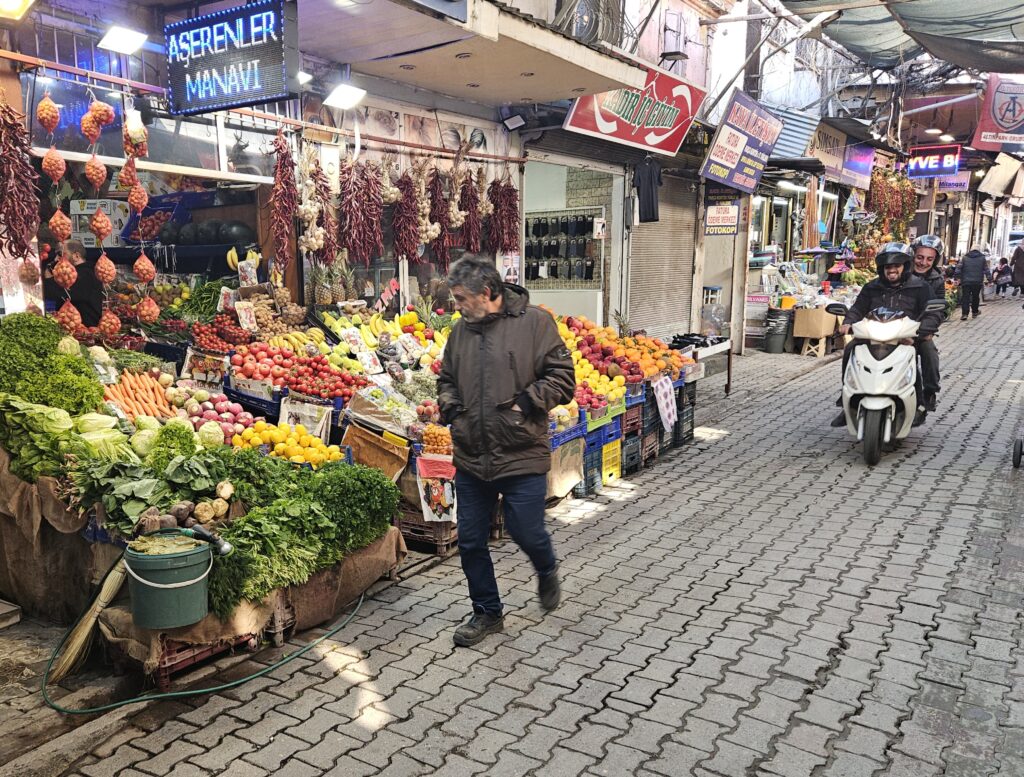
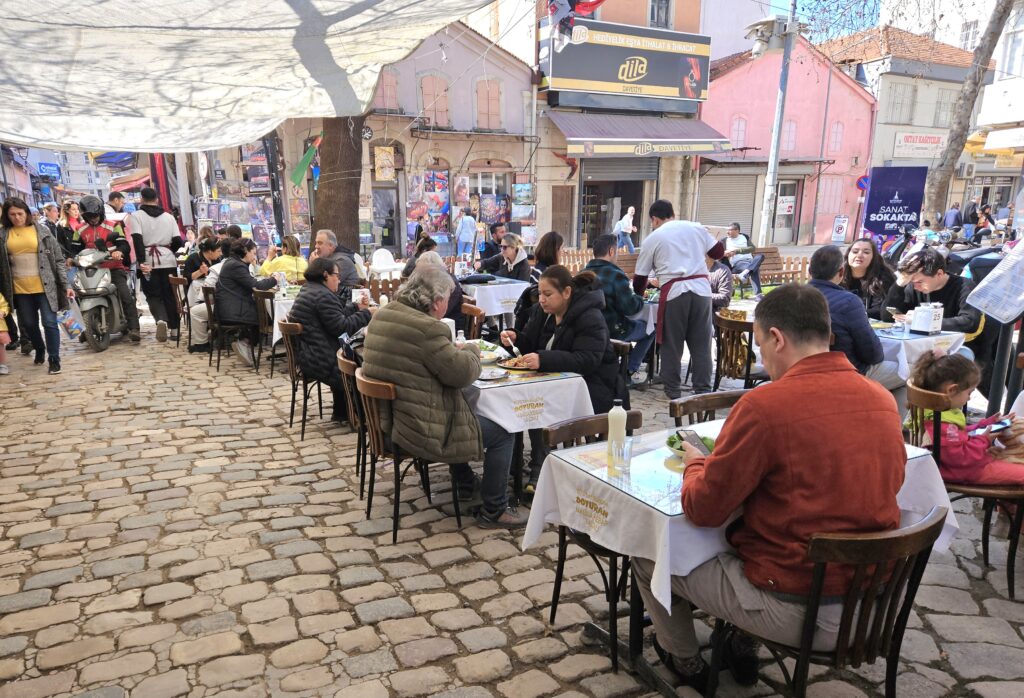
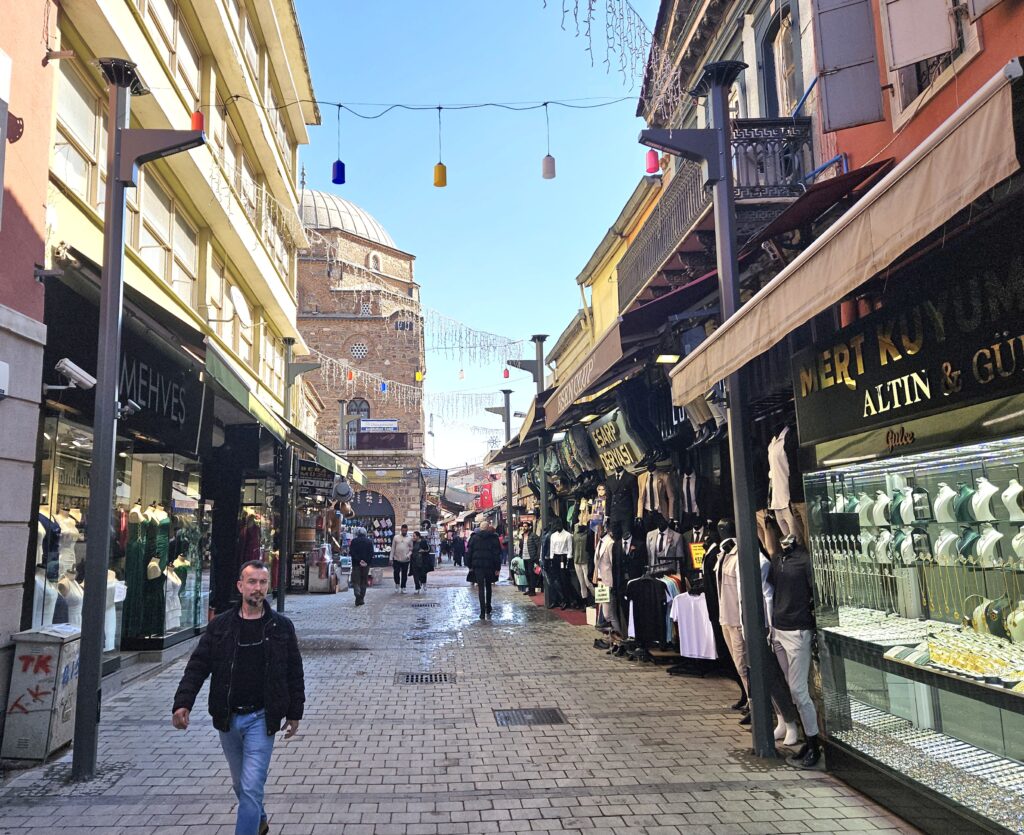
Down in the Ottoman market I was led to see some of the remaining caravan hostels .. left from the days when Izmir was one of the most important trading ports in the Ottoman Empire. Arriving or departing caravans stayed as a group in these enclosed, alley like places. There were storerooms for the goods, rooms upstairs for the men to sleep, places to eat, restrooms, and the Camels stayed in the courtyard. Today they are mostly full of coffee shops and restaurants.

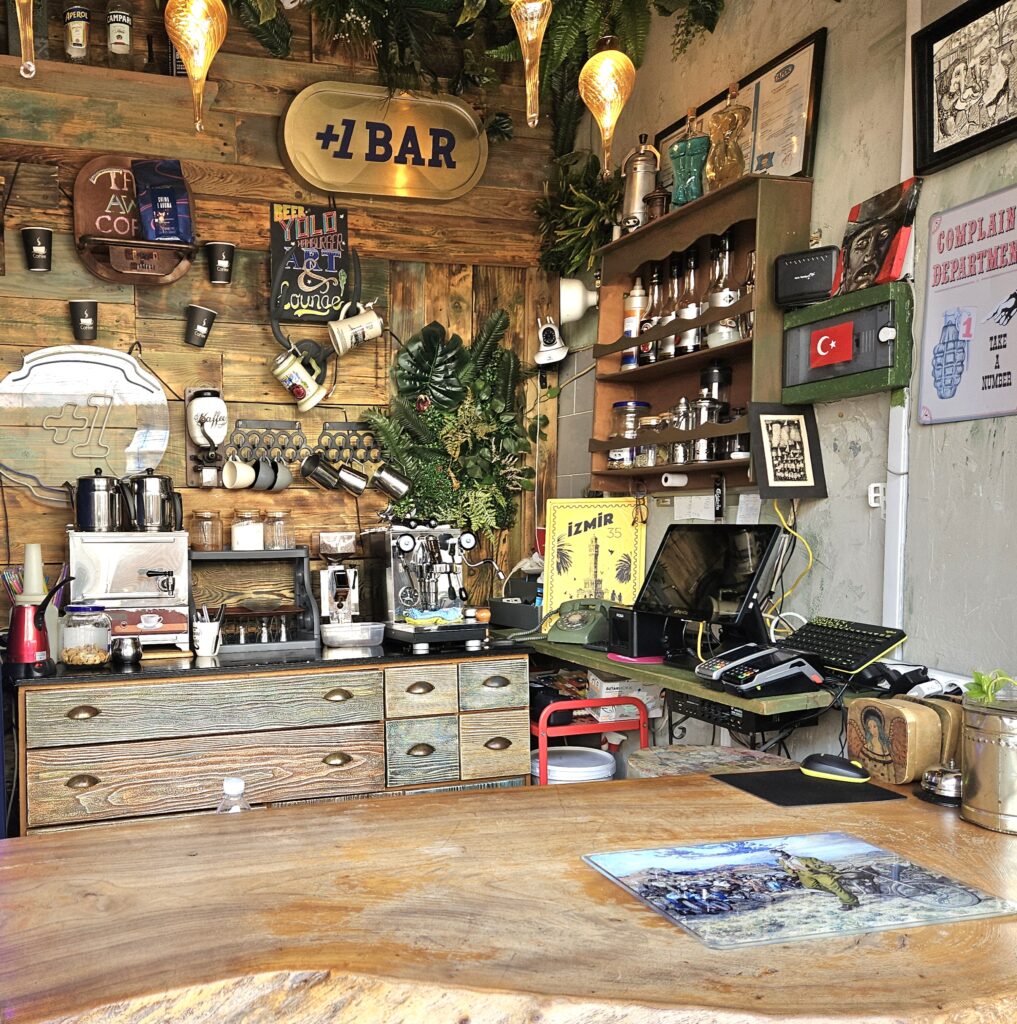
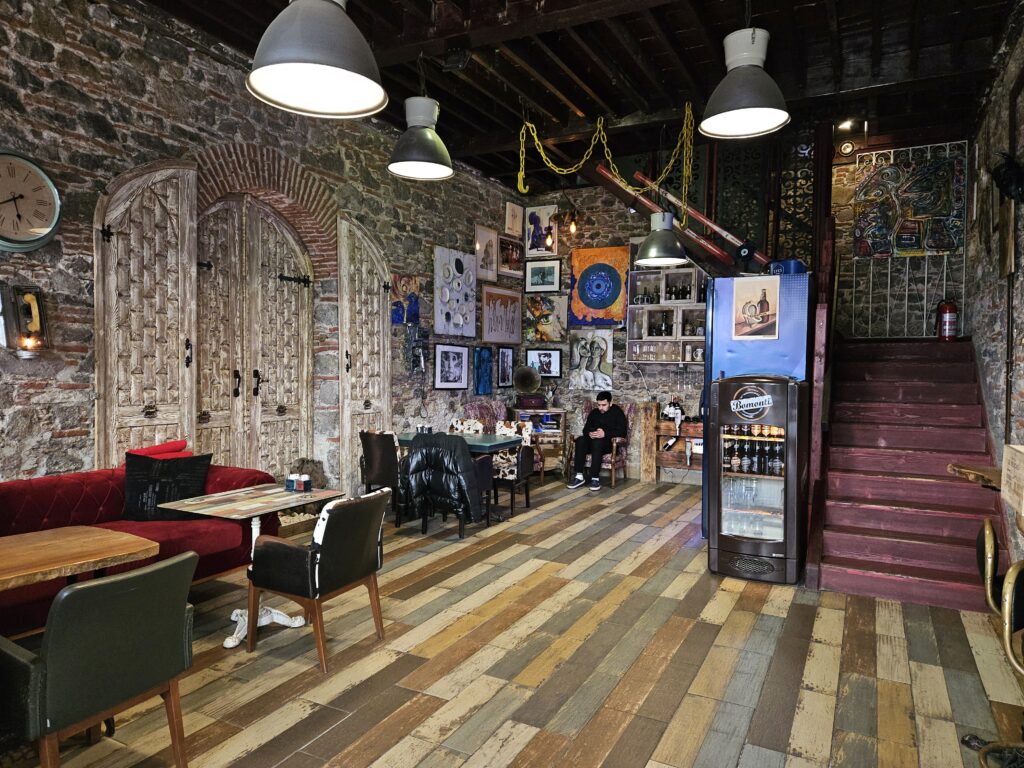
There are a thousand restaurants here in the city center. All along the waterfront. Everywhere in the Ottoman market. Throughout the close by neiborhoods.


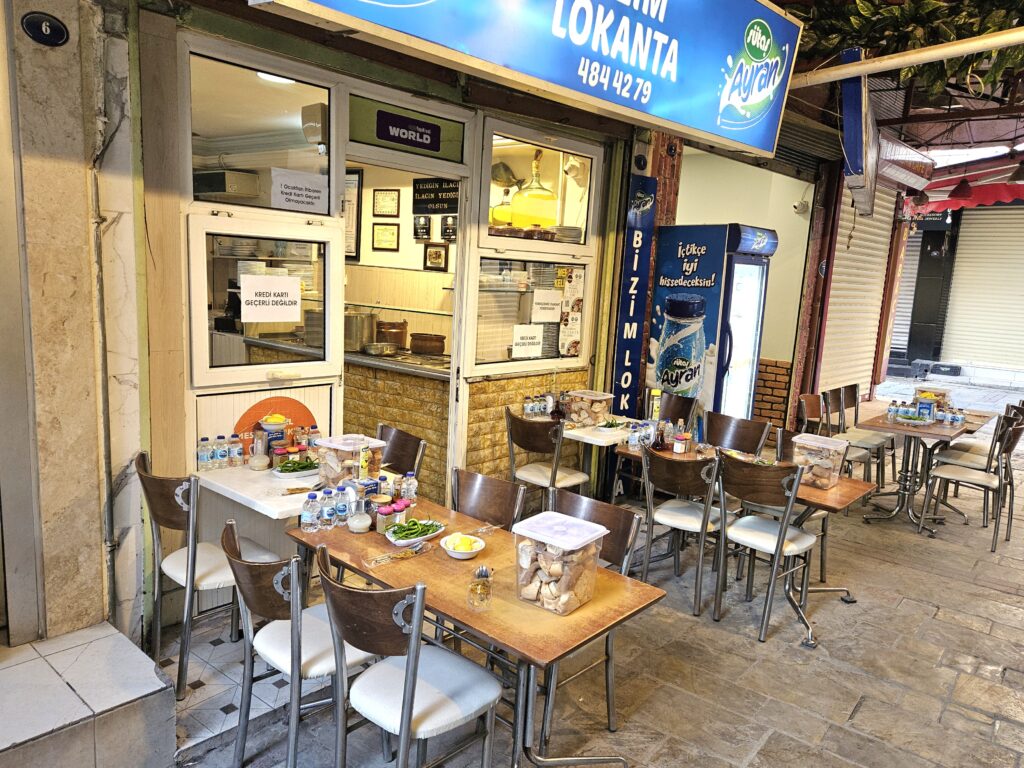

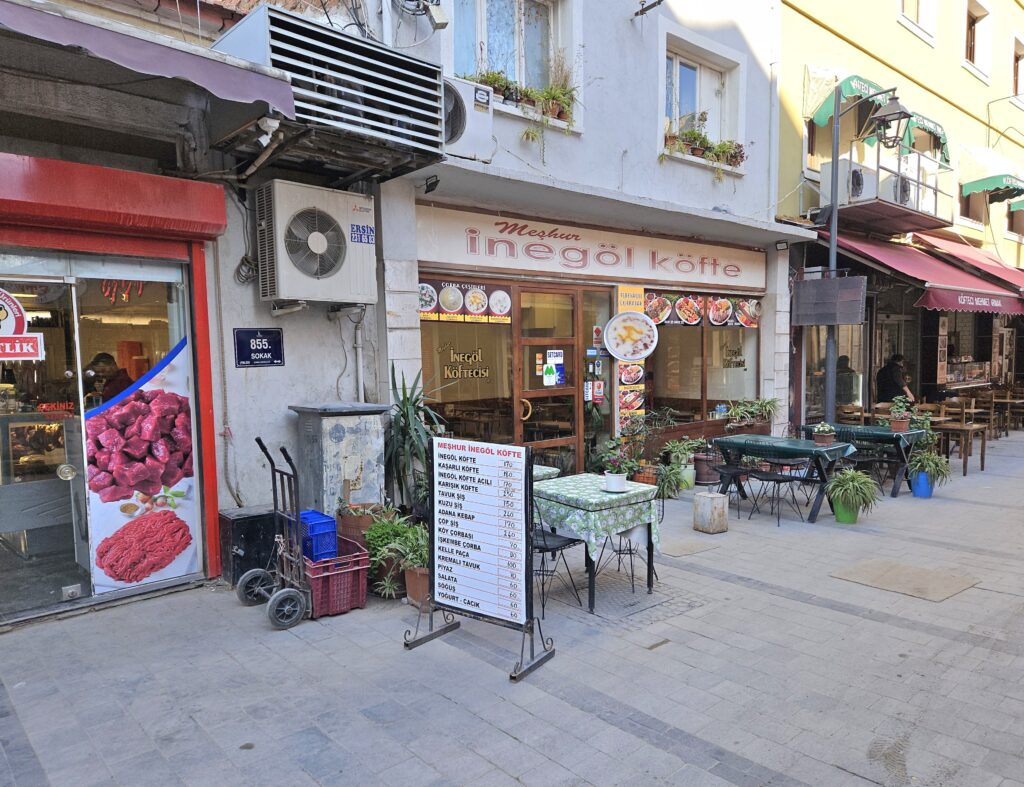
The base cuisine here is from nomadic peoples: meat roasted on sticks, flatbreads, simple cheeses and yogurt. One pot soups and stews.
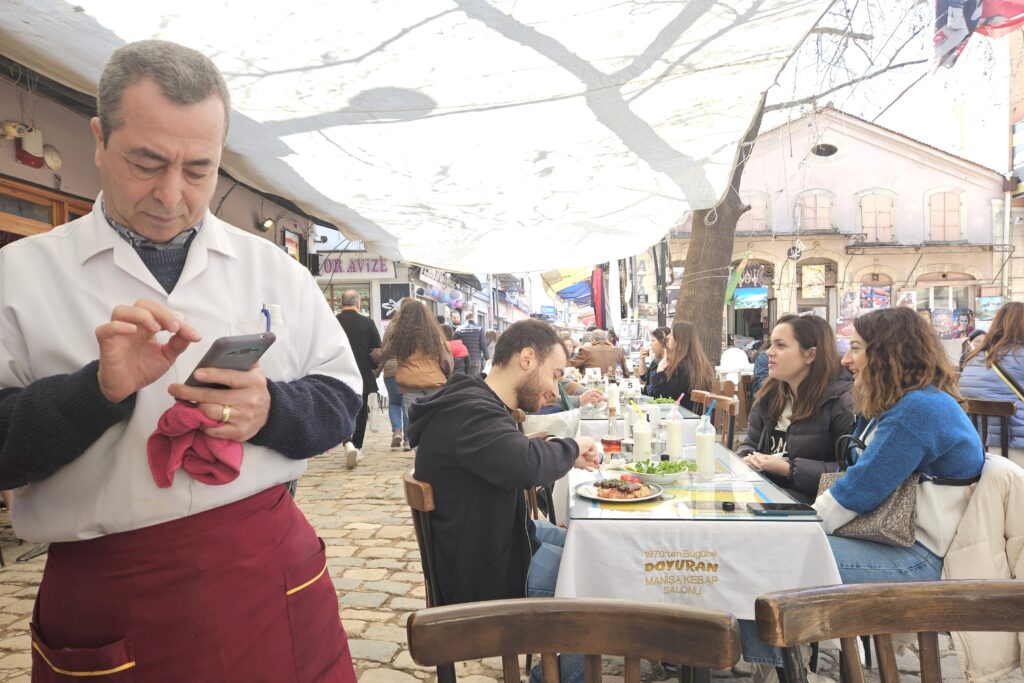
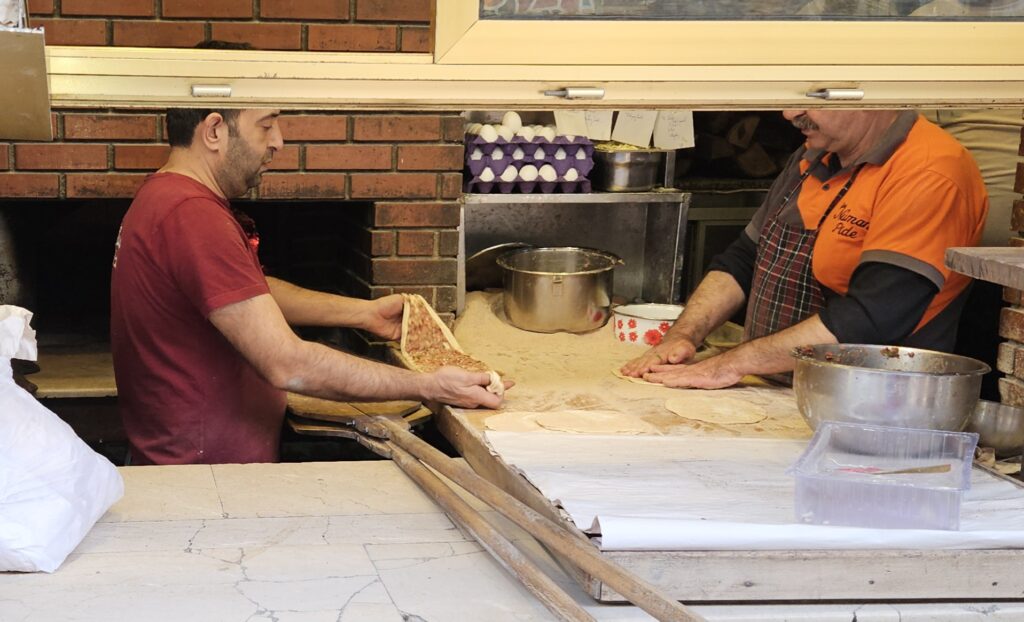
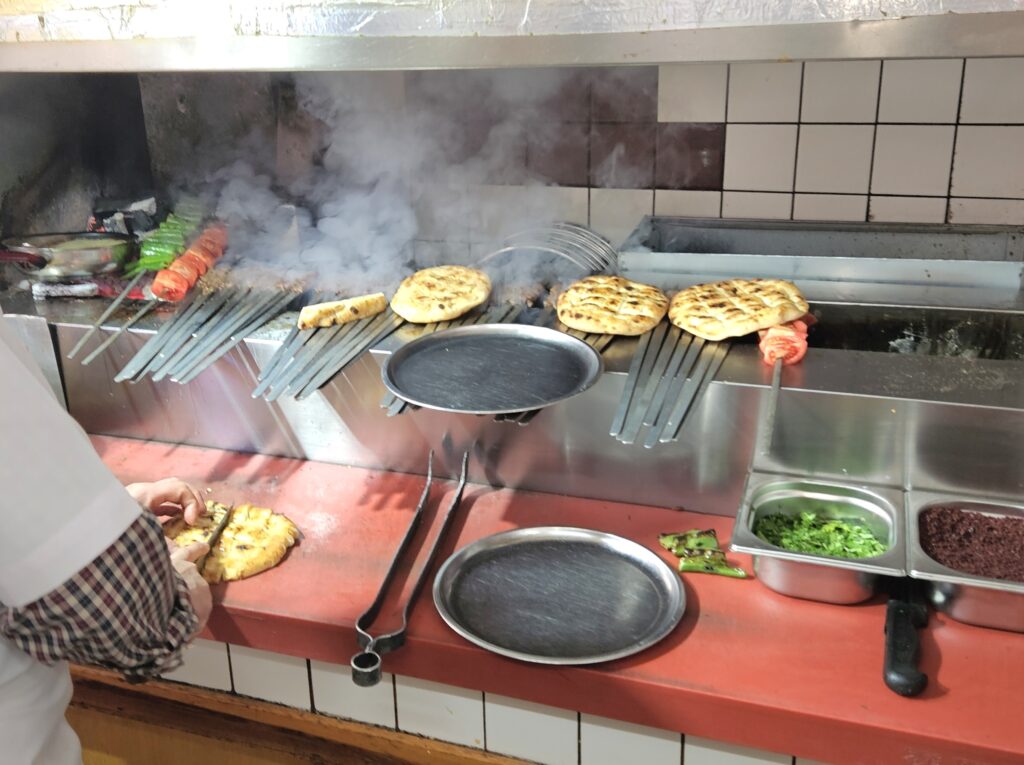
But over the centuries the food has been greatly expanded by an influx of refugees and migrants. Izmir was an important destination for Spanish Moors and Jews when they were expelled from Spain in the 1500’s. And more recently, Muslim refugees from Bosnia and Syria. As well as economic migrants from central Turkey and surrounding countries.
But no Greeks. The Turkish government forcibly expelled all Greeks in the 1920s.
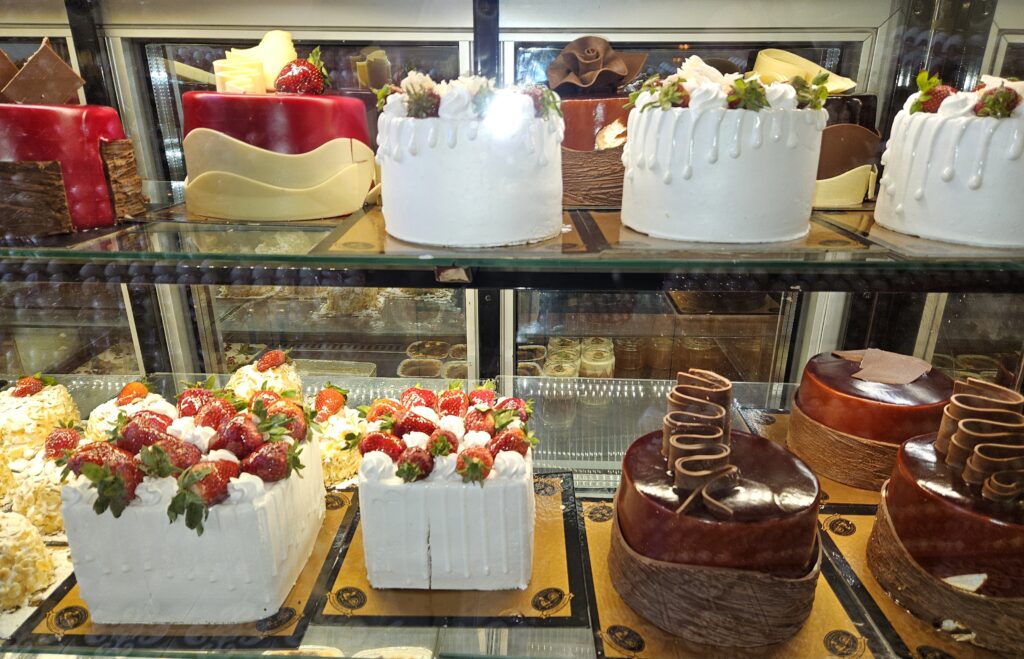
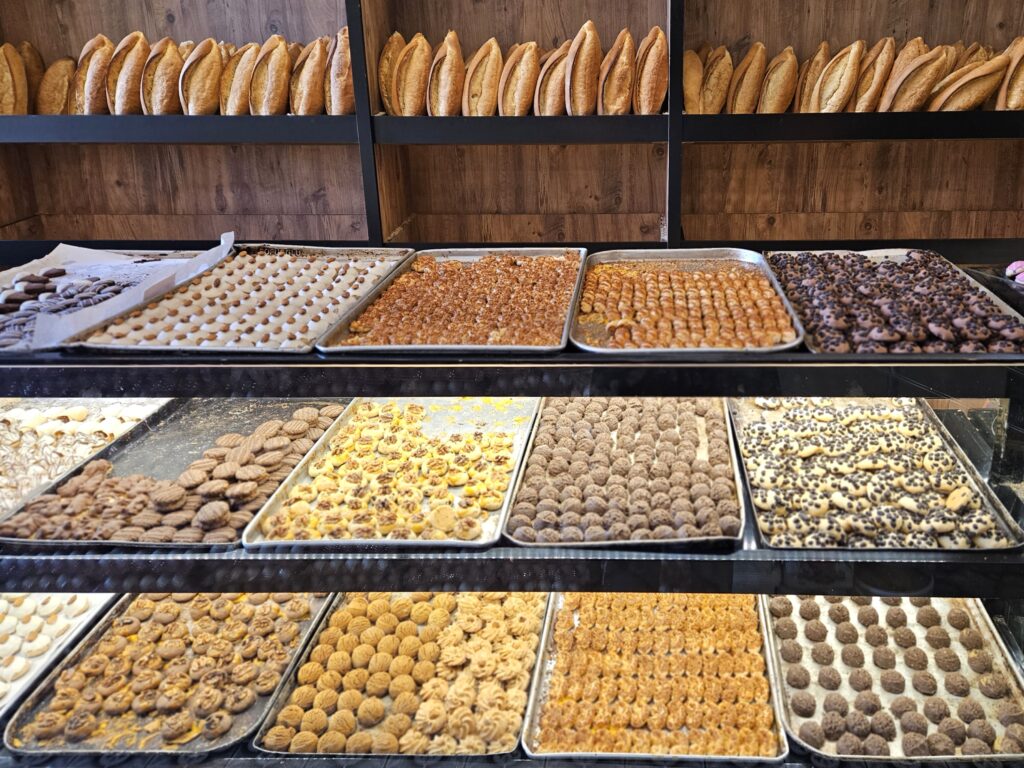

And of course, spices. The food here is usually spiced in exotic (to me) ways.
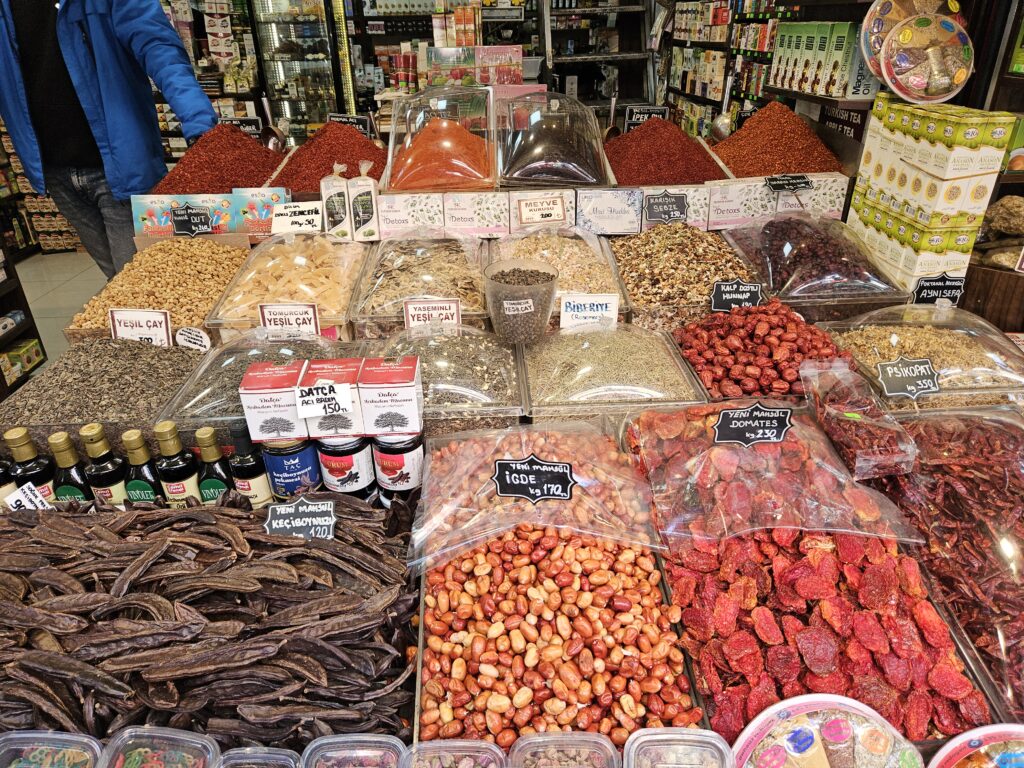
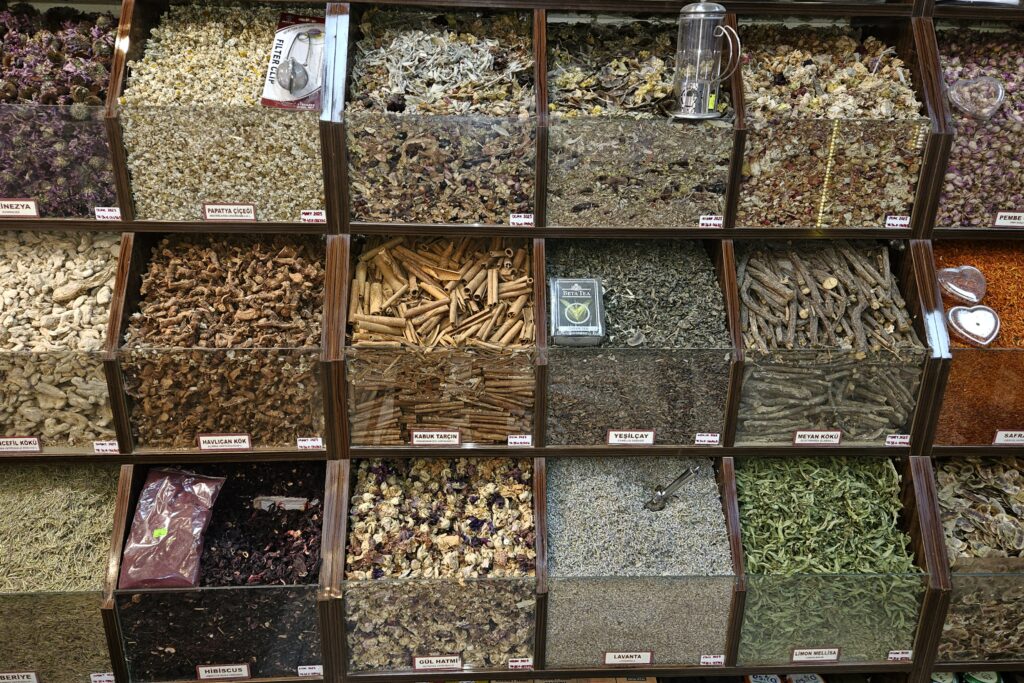

And, this being the Mediterranean, super fresh salads of all kinds. Interesting to me: they eat a lot of Parsley just straight. And, they have a local big leafed Arugula, very peppery, that they eat with salt and squeezed lemon.
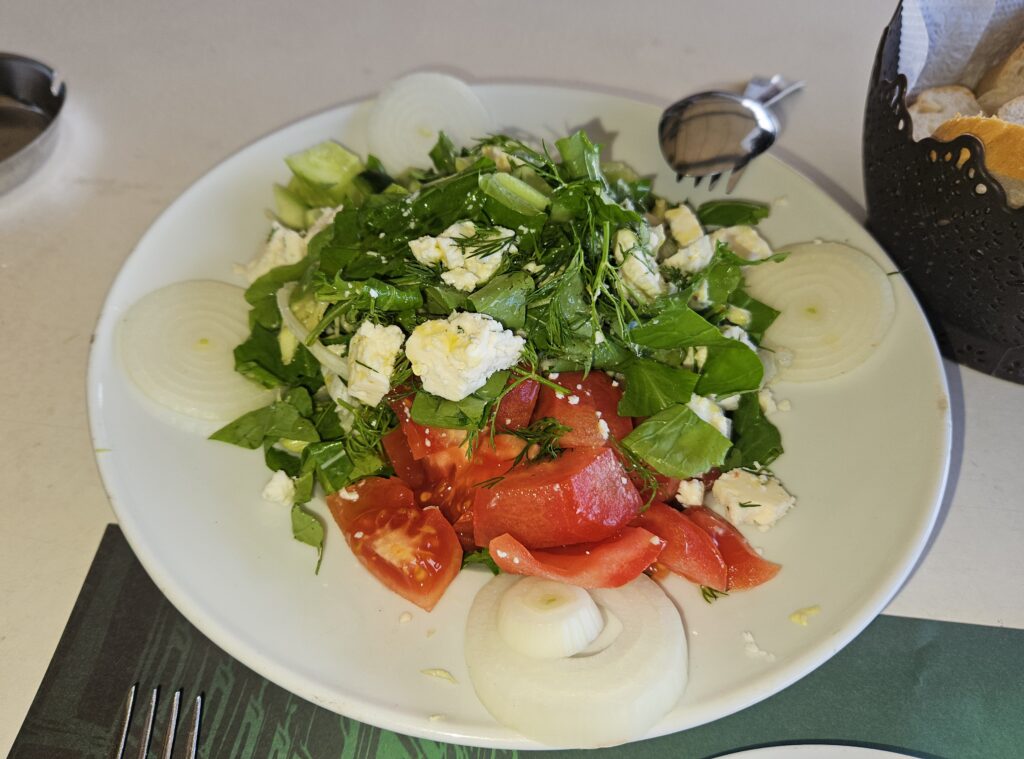
Some more unusual things:
Fresh Almonds.
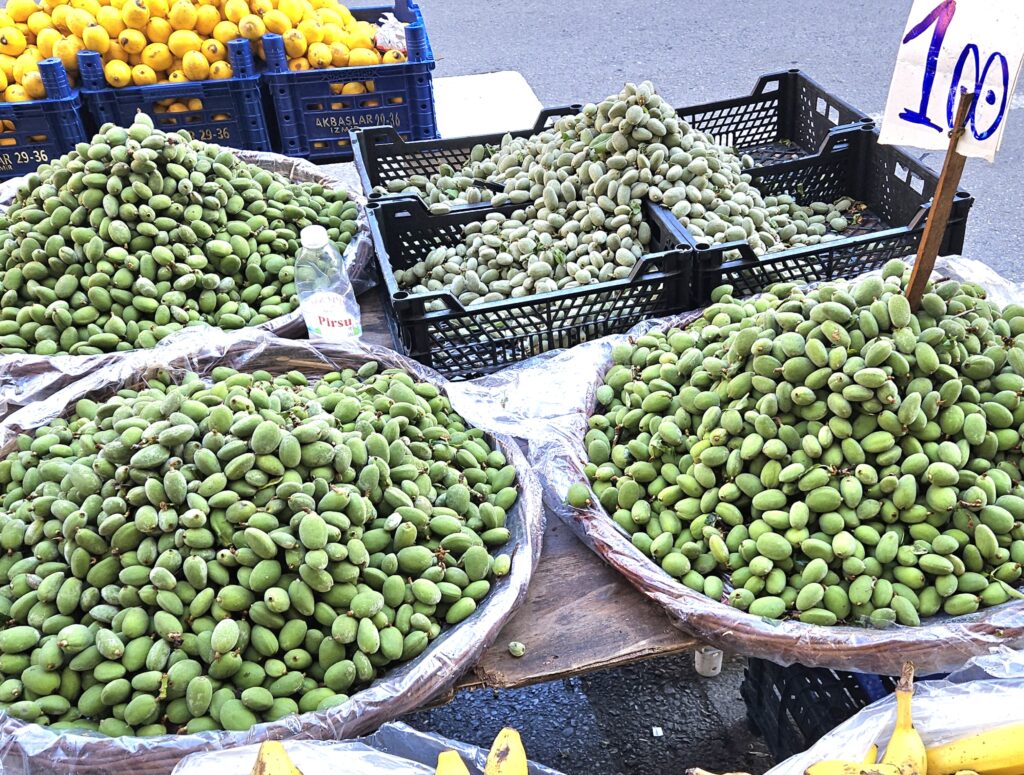
Sweetened cakes of ground Sesame seeds (made in this shop for three generations).
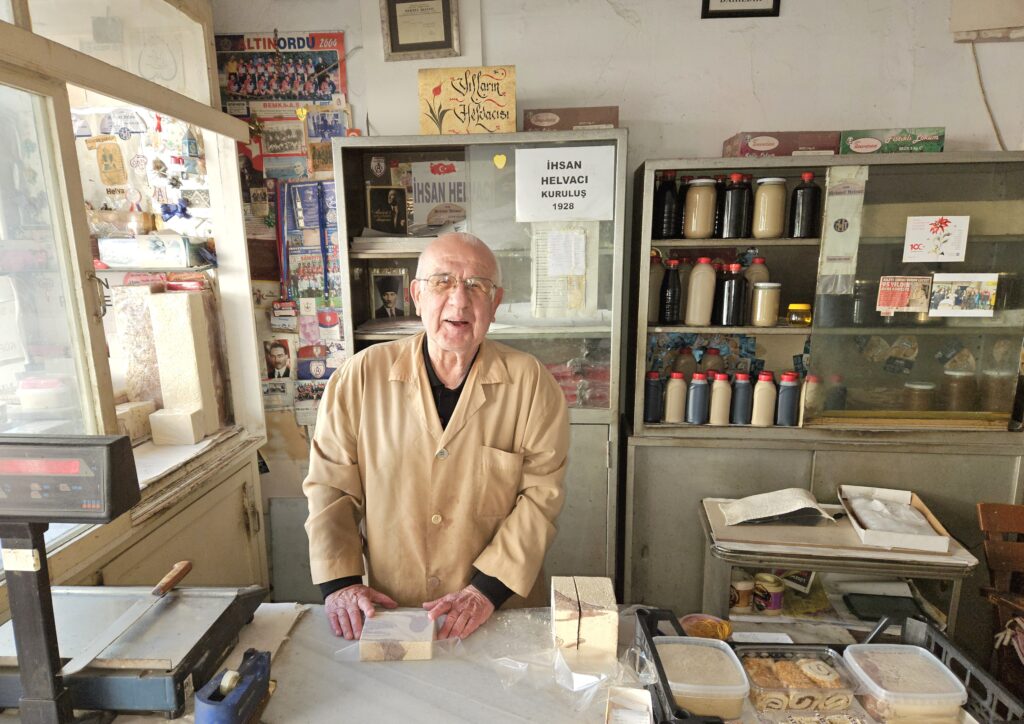
Fruit juice stands. Many many of them.
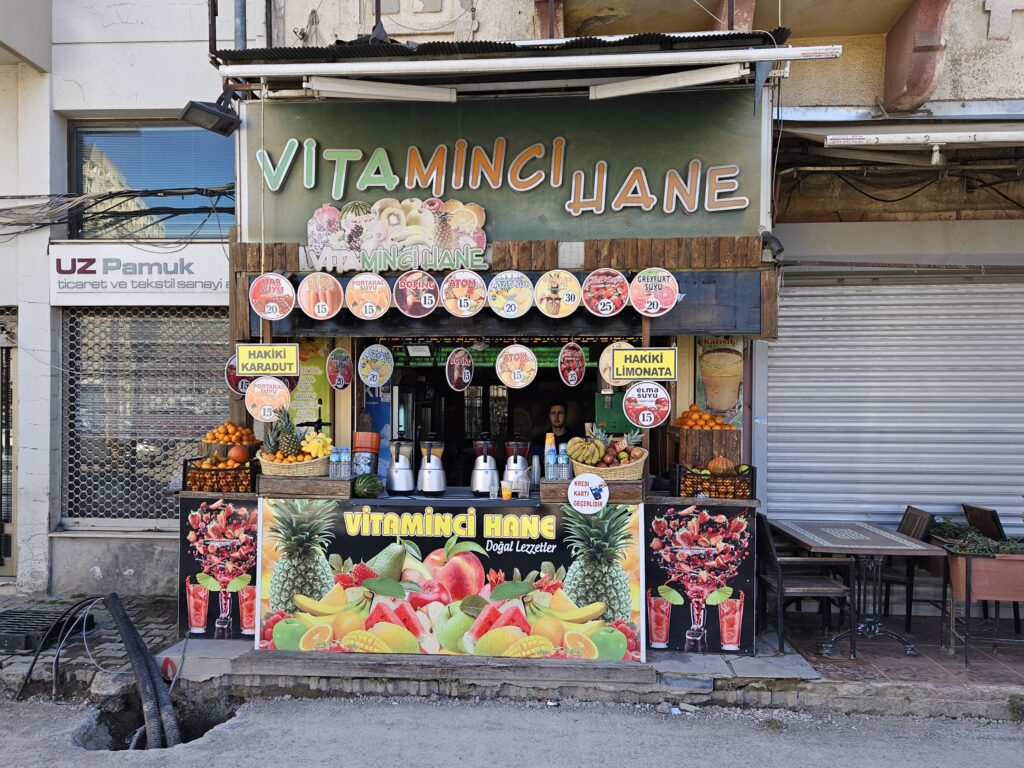
And, these Mussels. Sold everywhere. Not simply the steamed shellfish, like say in Brussels, but here, inside, besides the fish is also spicy seasoned rice. And they are delicious.
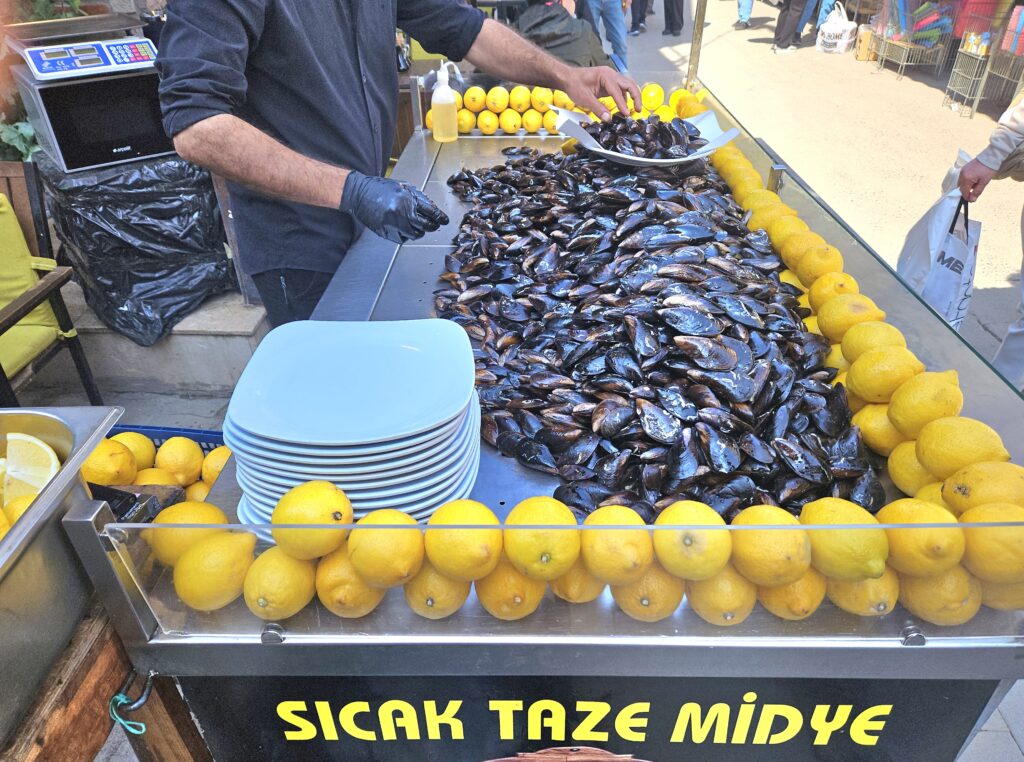
Had to try this stuff, but you are looking at a photo of my first and forever last. Probably the strongest stuff I have ever tried.
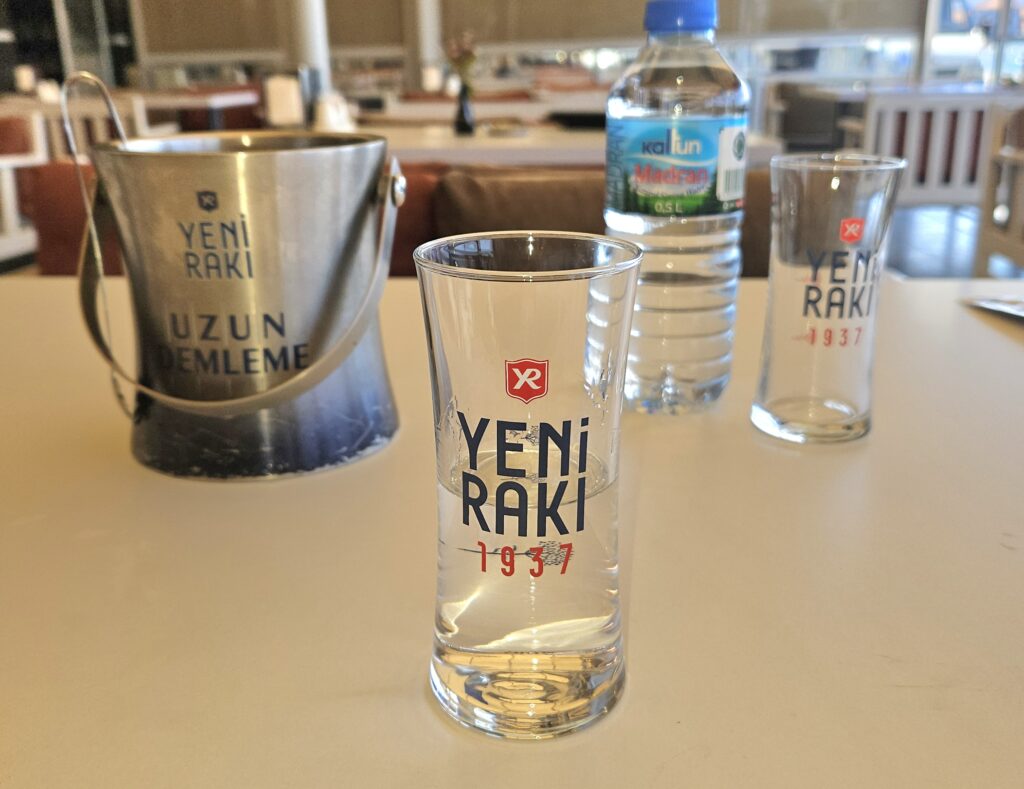
And yes, the bees found me.

Pushing your patience, I want to pass on this factoid. This funny “bean” .. the Carob ..has a fibrous gummy layer between the very hard shell and the seeds. You can make syrups and other concoctions from this material, and people do and have done since ancient times.
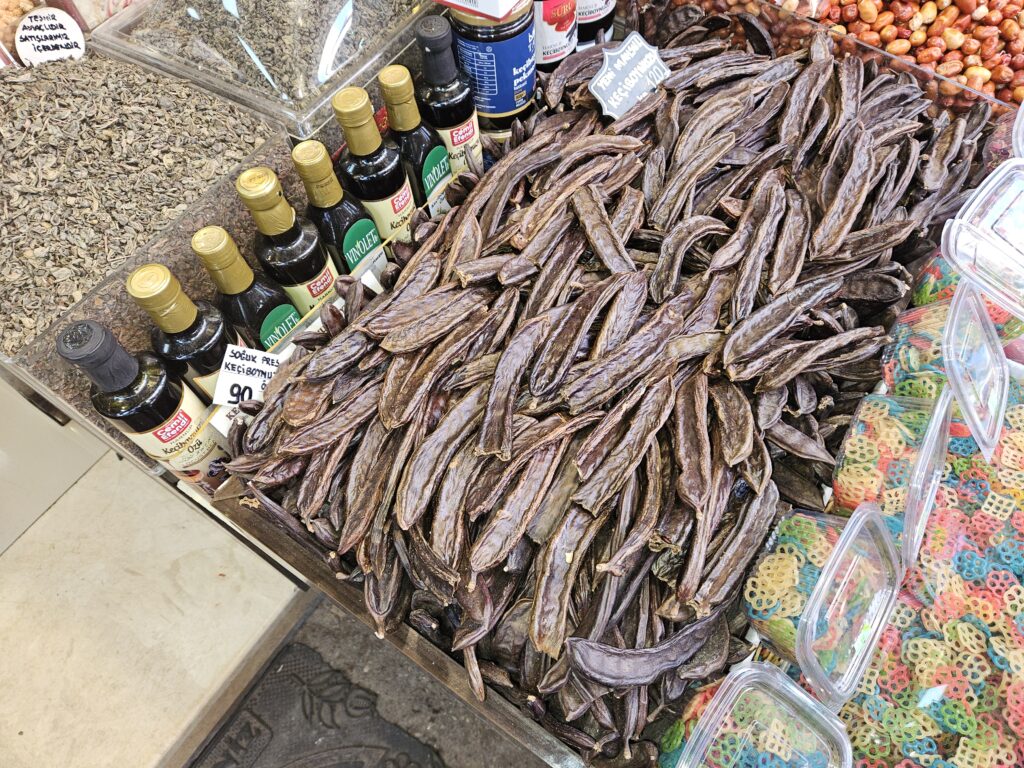
It is interesting that the market for Carob boomed and then collapsed when the interior material was used as a compounding agent in PVC to make vinyl records.
But more interesting. The ancients found that no matter the shape of the seeds, roughly spherical, elongated, etc. etc. … every seed had exactly the same weight. And they used the seeds to weigh precious things. And so Carob, now Carat to us .. gave us 14 carat gold, 24 carat gold, 3 carat diamond, and so on.
And that’s it. Thanks for coming along. I am moving west to Athens tomorrow and soon back to Minnesota.